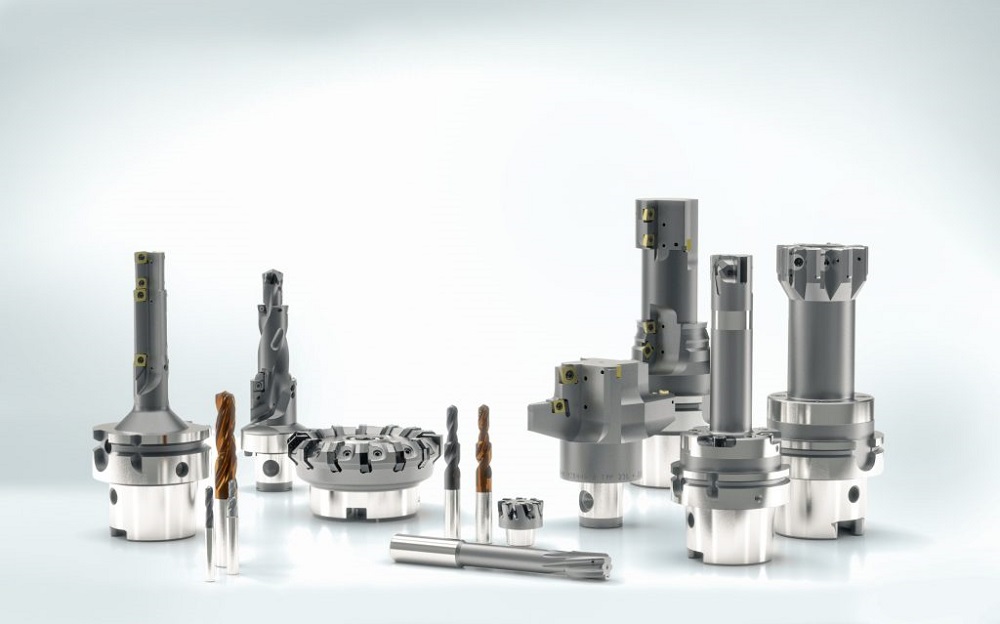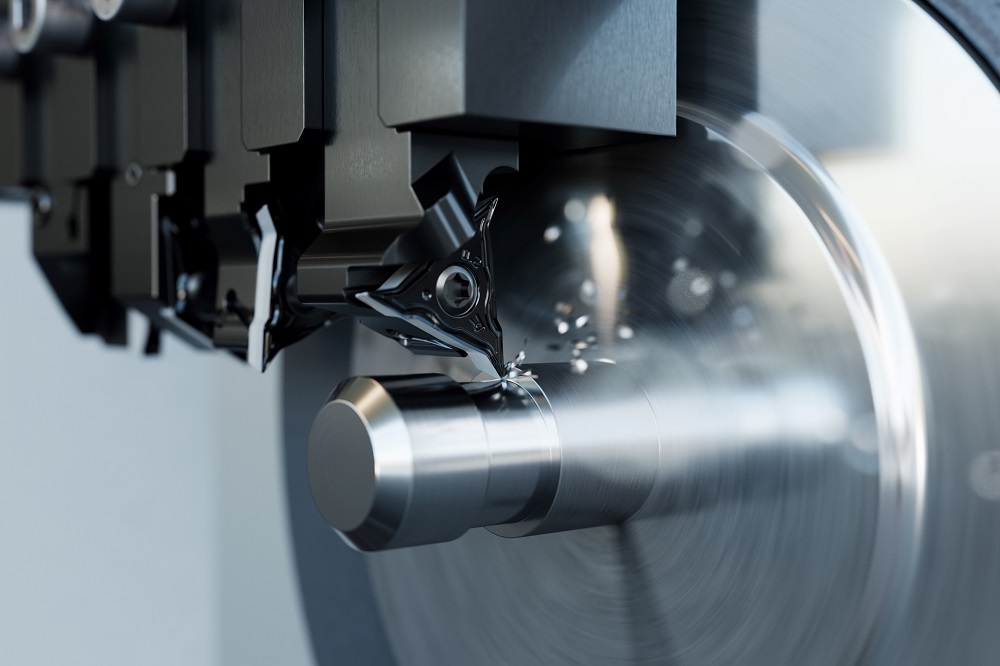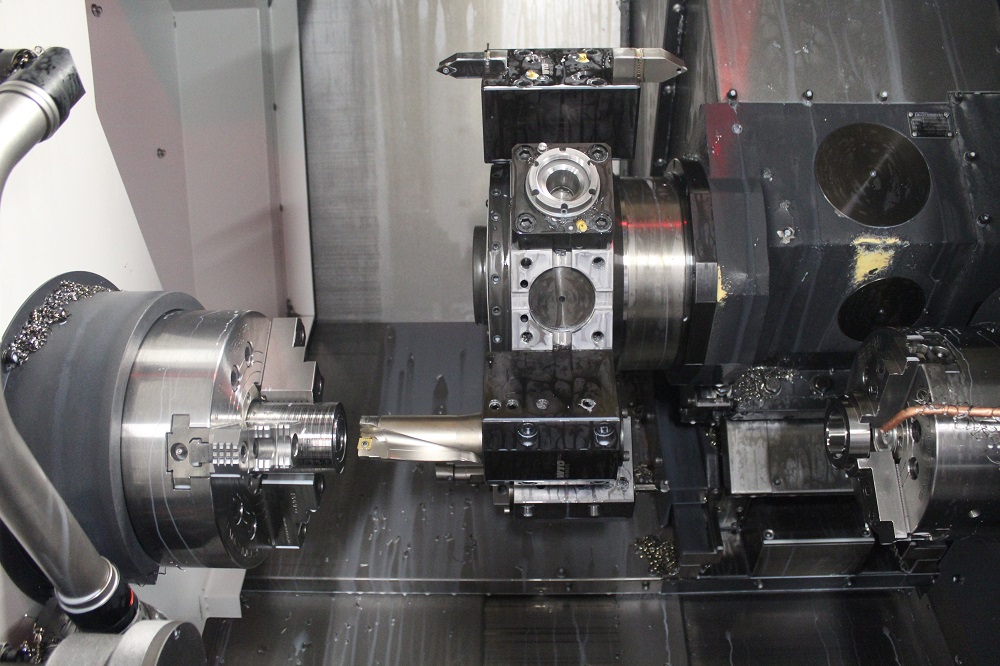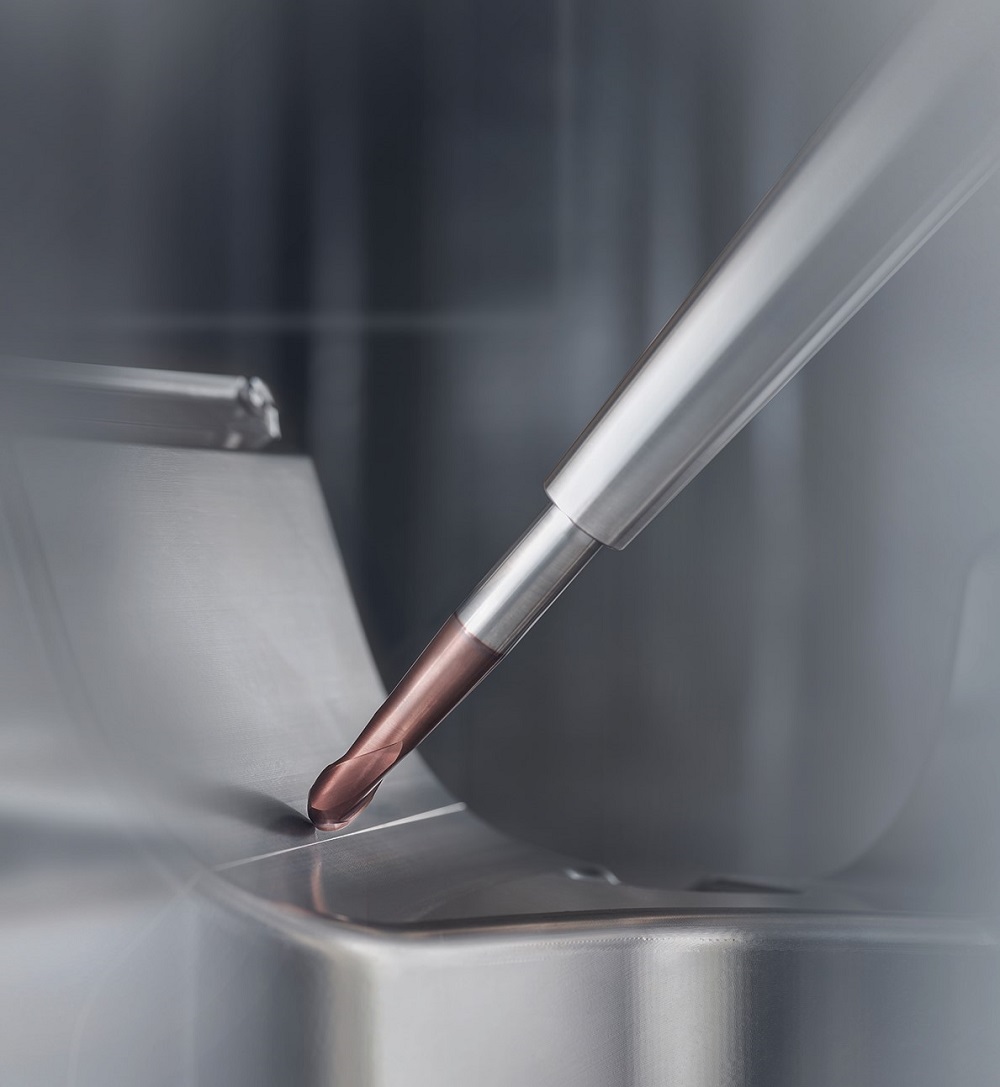Mapal has carefully examined critical components of the fluid power industry and their potential for complete machining. An example is axial piston pumps and motors, a central component of which is the cylinder block, made either of steel (C45 or 42CrMoS4) or spheroidal cast iron (EN-GJS-500-7 or EN-GJL-400-15. Mapal experts have developed a solution that reduces the machining time for a customer’s cylinder blockby 19%.
“One customer was struggling with high costs for manufacturing cylinder blocks,” says Tobias Stolz, component manager for general machining at Mapal. “A great deal of effort was required to ensure the defined surfaces, which had to be between Rz = 27 and 37 µm, as well as the high quality of liners with tolerances for roundness, straightness and parallel alignment of 3 µm.”
The customer today machines the pressure and suction kidney with the Mapal OptiMill-Uni-Pocket solid-carbide milling cutter as part of a new process. This tool supports the boring operation by way of inclined plunging. The machining of these inlets and outlets therefore does not require any other tools.
A step drill with Tritan-Drill geometry offers similar benefits when pre-machining the piston bores, dispensing with the requirement for a spot face. Furthermore, thanks to sharp cutting edges, the bottom of the bore no longer requires deburring. The multi-stage Mapal fine-boring tool ensures optimal quality before pressing in the brass bush. It is not only very precise during machining but also particularly economical thanks to the HX insert’s six cutting edges. These three tools alone reduce machining time by 19% compared with the previous method.
“We offer our customers economical processing solutions to their machining challenges for all functionally relevant parts in the fluid power industry,” summarisesStolz.
For further information www.mapal.com



















